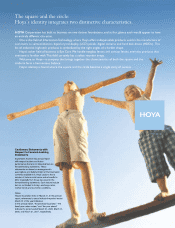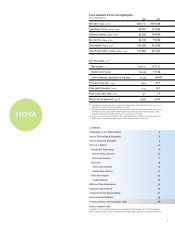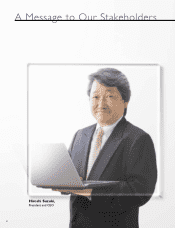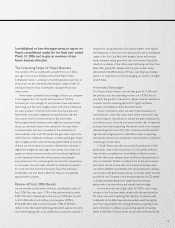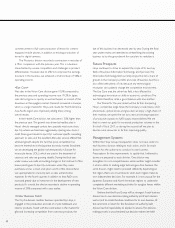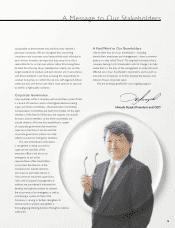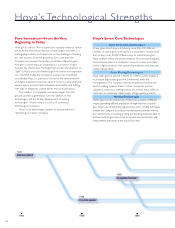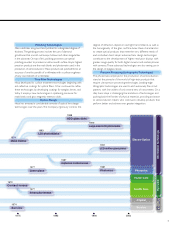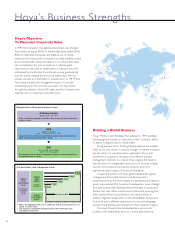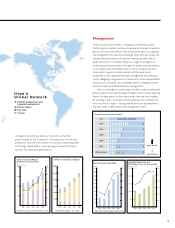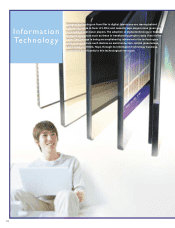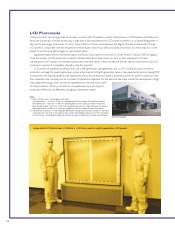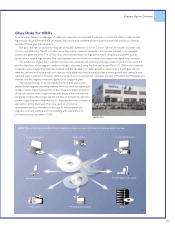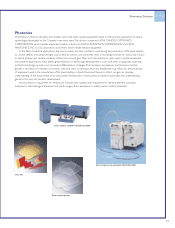Pentax 2006 Annual Report Download - page 10
Download and view the complete annual report
Please find page 10 of the 2006 Pentax annual report below. You can navigate through the pages in the report by either clicking on the pages listed below, or by using the keyword search tool below to find specific information within the annual report.
Hoya’s Business Strengths
Reorganization of Business Indicators at Hoya
SVA and Market Value (Shareholder Value)
Ordinary income
Before March 31, 1994
10 years of SVA
ROE
(Return on equity)
April 1, 1994 to March 31, 1997
In 1997, the Company’s management benchmark was changed
from return on equity (ROE) to shareholder value added (SVA).
ROE, an index that emphasizes the effective use of capital,
measures how much profit a company has made using the capital
that its shareholders have entrusted to it. In contrast, SVA takes
into consideration the cost of capital, so it attaches great
importance to the value to shareholders. It subtracts the profit
anticipated by shareholders from the net income generated by
business activity, yielding the amount of added value that has
actually accrued to shareholders. In actuality, prior to 1997 Hoya
had already adopted the management stance of “consider
shareholders first.” This principle was taken one step further
through the utilization of the SVA index, and the Company now
explicitly aims to “maximize corporate value.”
Hoya’s Objective:
To Maximize Corporate Value
Hoya’s Medium-Term Strategic Plan, adopted in 1997, identified
building a global business as a key piece of the Company’s effort
to deliver increased value to shareholders.
Doing business with a broad, global perspective has enabled
Hoya to not only discern in advance changes in market structures
but also reform its overall business organization. This in turn
allowed the Company to introduce more efficient business
management methods. As a result, Hoya outgrew the need to
limit allocation of management resources to its business in Japan,
and can choose the best production locations and most
appropriate sales locations from around the globe.
In Japan, the location of Hoya’s global headquarters, global
strategies are formulated, research and development is
undertaken, production technologies are developed, and high-end
goods are produced. The Company’s headquarters issues strategic
directives and provides development technologies to production
facilities and sales offices located around the world, ensuring that
these quickly reflect local production and sales activities. In
addition, regional headquarters in the United States, Europe and
Asia work across different operational divisions, providing legal
assistance and financial administration to their respective regions.
The Hoya Group Financial Headquarters are currently
located in the Netherlands, and this is where global financial
Building a Global Business
Sales-oriented management focused on how much profit has increased in
relation to sales
Capital efficiency-oriented management focused on how much profit has
been generated using shareholders’ equity
SVA
(Shareholder value added)
April 1, 1997 to present
Shareholder value-oriented management focused on how much profit has
exceeded the cost of capital
(Theoretical
aggregate
market
value)
(MVA)
(Premium)
’
1. MVA is the aggregate each year of single-year SVA discounted by the cost of
capital at current value.
2. The outcome of utilizing SVA will be the same as the shareholder value
calculated from cash flow.


